On June 6nd, the public cooking class "Seasonal handiwork together!Umeboshi classroom" was held.
The person in charge is a regular cooking school lecturer and has a history of making umeboshi.20This is teacher Eiko Komatsu of the year.
The difficulty in making umeboshi is that the time of ume production and the speed at which they ripen differ depending on the climate of the year.Ume is a natural thing that does not grow due to human convenience.
This time, a week before the cooking class, the secretariat staff went to an organic plum farm in Gojo, Nara, and picked up plums that would be perfect for the day of the class!
Ume orchards are located on mountain slopes, and harvesting them requires a lot of manual labor.
In addition, since organically grown plums do not use herbicides, it takes time and effort to care for them, including manual mowing, and it seems that they do not spread easily.
Two representatives of plum farmers.cool!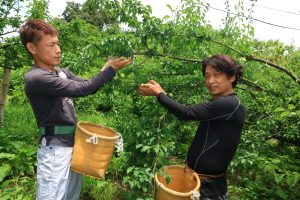
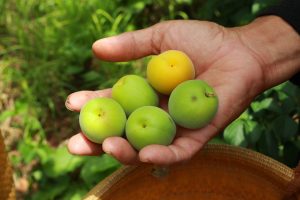
The harvested plums are put through a sorting machine to align the sizes for shipping.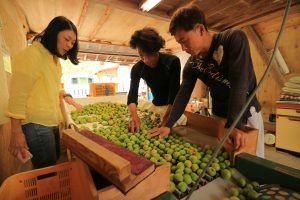
The good scent of plum wafts around.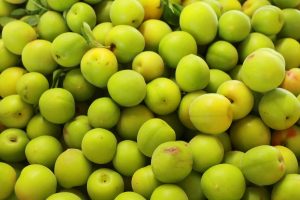
Until the pickled plum class, I spread it out at room temperature and let it ripen.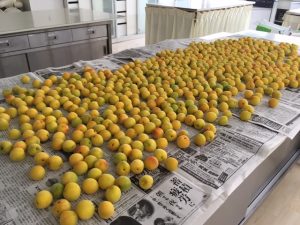
Now, I will tell you a digest of how to make Eiko Komatsu's style.
The hands-on training included pickling plums with salt, and the rest of the process was explained through demonstrations and lectures.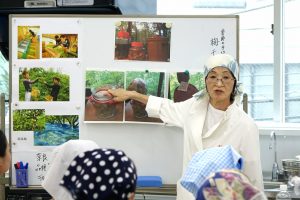
① Gently wash the plums in a bowl with water, wipe the plums, and remove the stems.
② If you pickle plums with 20% salt, you don't need to sterilize them, but if you want to use a little less salt, you can sterilize the plums by sprinkling them with shochu to avoid mold.
③ Put plums and salt in a container, put plastic wrap on top, and cover with a drop lid.Place a weight on it.
The place to put it is a cool and dark place.A closet or a place away from light is good.
④ After about a week, water (white plum vinegar) will definitely come out.
⑤Wash the red shiso leaves.Squeeze with salt until tender.The squeezed juice gradually becomes a beautiful purple color. Squeeze it about 3 times to release the dryness, and discard the squeezed juice without using it.
⑥Mix the white plum vinegar into the shiso and spread it over the umeboshi in the container.Cover with a drop lid, put a weight on it, and leave it until the end of the summer.
⑧ Doyoboshi is dried after the rainy season ends.It becomes soft by exposing it to the night dew.If you put the plums back in the plum vinegar again after drying, you will get a juicy pickled plum.If you do not put it back, it will become a nostalgic wrinkled umeboshi.
The process is not that complicated, but there are many points that need to be taken into consideration, and the participants asked many questions.Komatsu-sensei was very careful with his clear answers backed up by his extensive experience.
In addition, the class was full of demonstrations and lectures on how to make plum wine and plum juice!
At the end, we all had plum rice porridge, miso soup, and snacks using plums.It was delicious.
Umeboshi, a traditional preserved food that Japan is proud of, is widely known for its bactericidal and health benefits.
Unfortunately, the umeboshi sold in general stores contain a lot of additives, and there aren't many genuine old-fashioned umeboshi.
Originally it was made at home.Everyone remembers how to make it and makes original umeboshi every year.How about making a